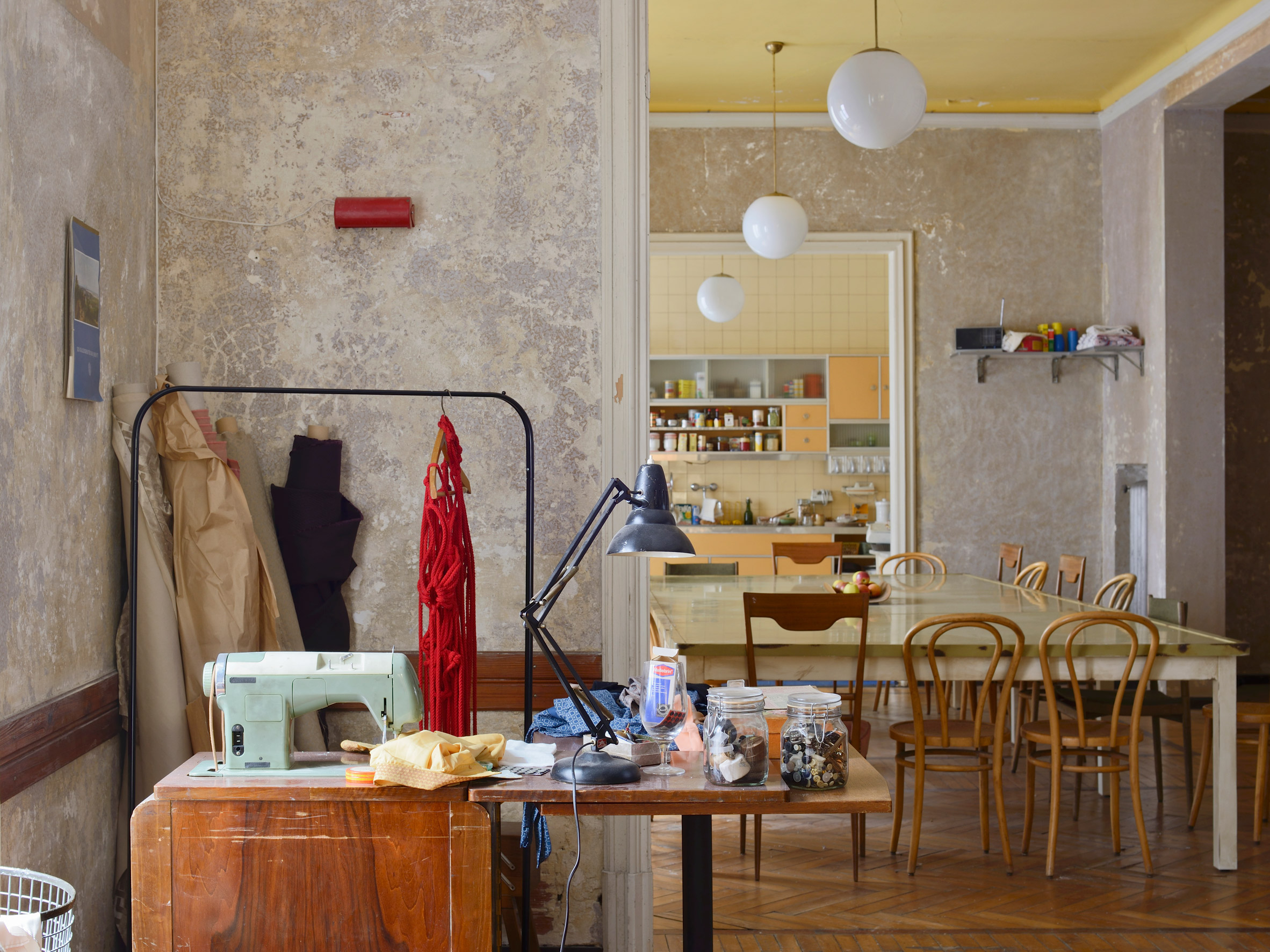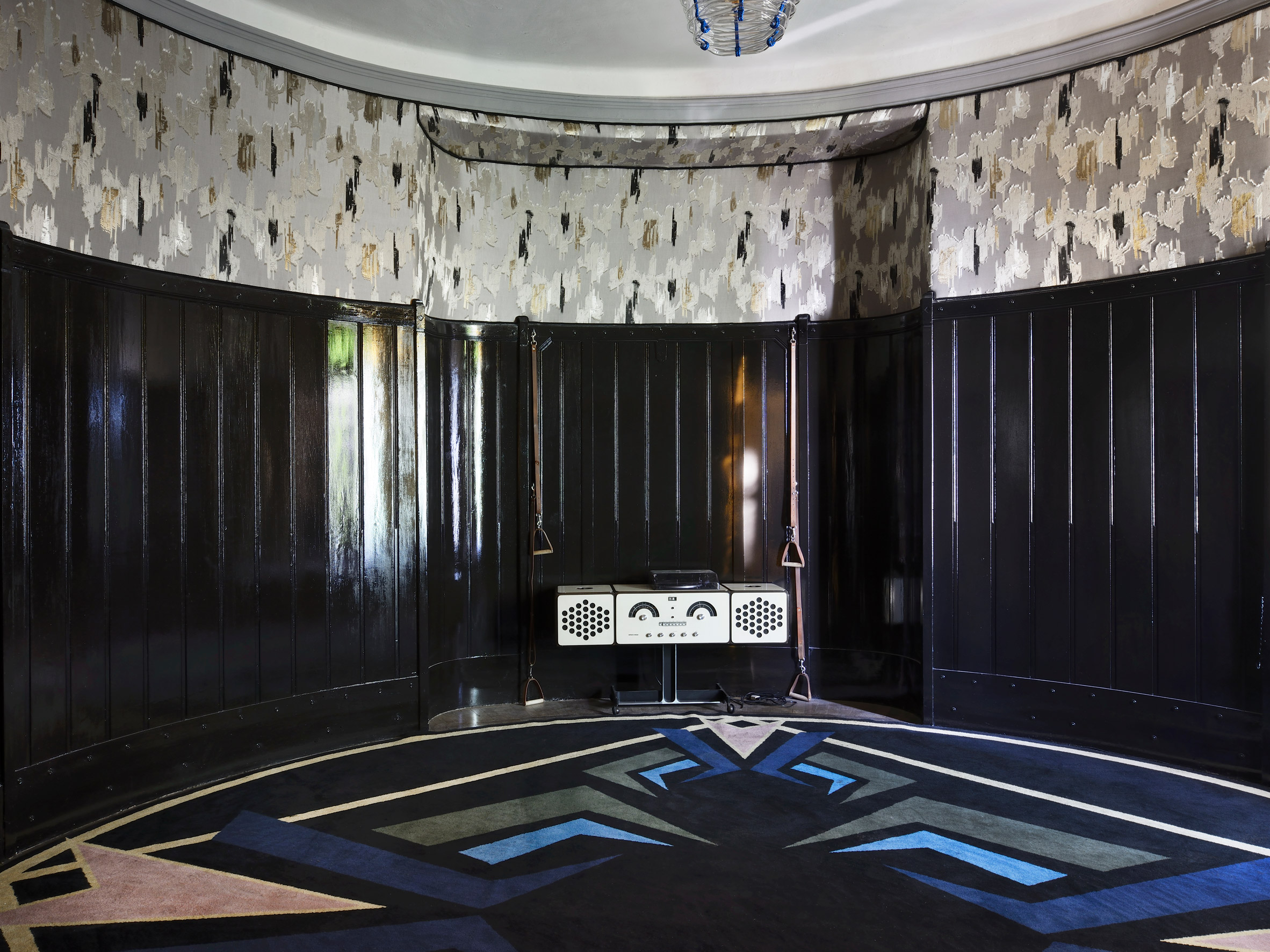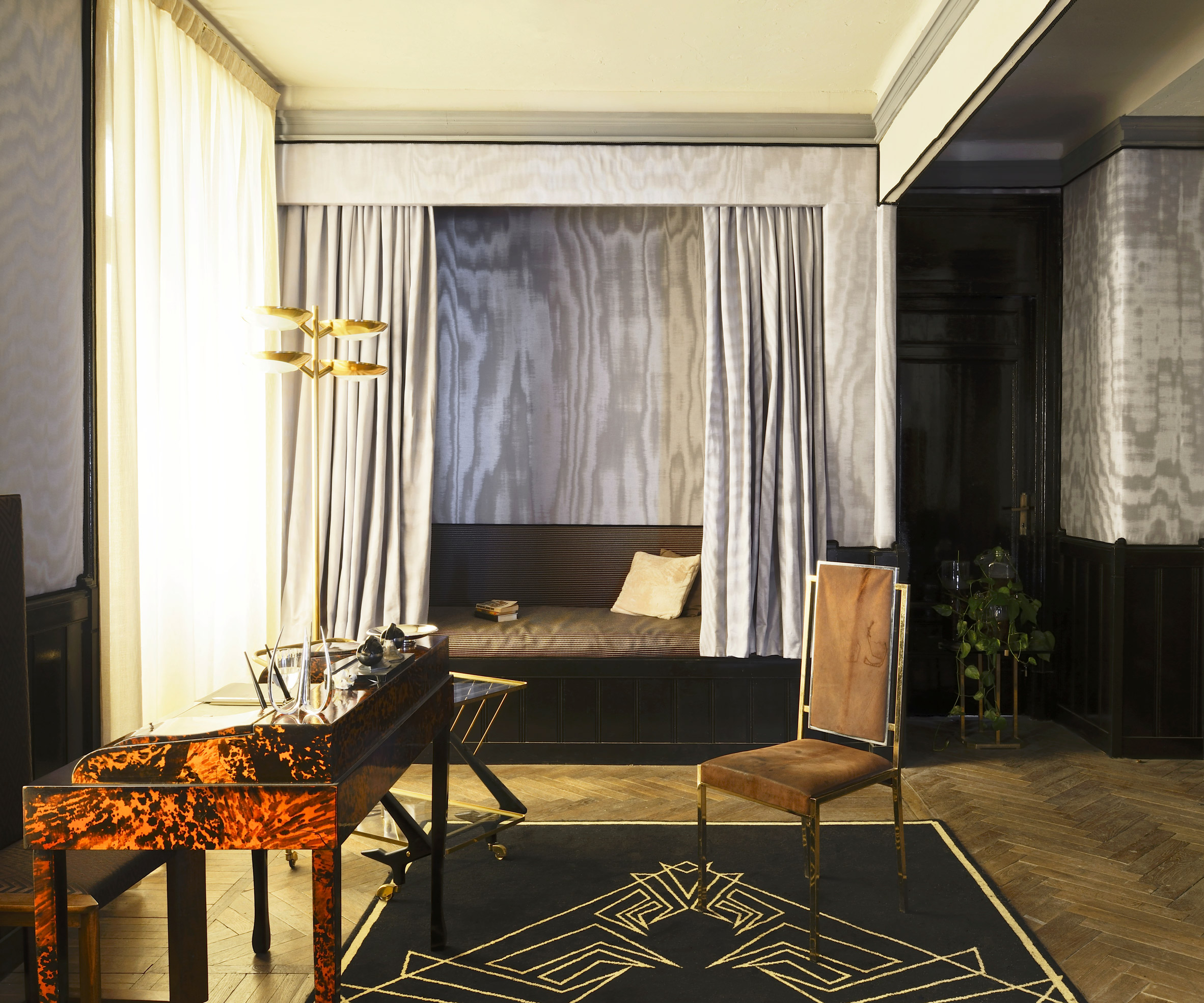Luca Guadagnino looked to "forefathers of modernism" for Suspiria sets, says designer
Luca Guadagnino's rendition of horror movie classic Suspiria takes its design cues from the modernist architecture of masters such as Le Corbusier and Adolf Loos, says production designer Inbal Weinburg.
Weinburg worked with the Italian film director to create all the sets and props for Suspiria, which is released in cinemas worldwide on 2 November.
Based on Dario Argento's 1977 film of the same name, the movie is set in a fictional dance academy in 1970s Cold War-era Germany.
The designer said she looked to early modernism to develop the "sparse and institutional" aesthetic of the film. In particular, she referenced the architecture that emerged from the influential Bauhaus school, as well as the designs of Austrian architects like Loos and Josef Hoffman.
"We wanted to focus on the forefathers of modernism, especially Austrian architecture from the early 20th century," Weinburg told Dezeen.
"Loos and Hoffman were important, as they were the bridge between the late 19th century and what would become Bauhaus. So you could still feel this classicism," she explained.
Film is set in dance academy in 1970s Berlin
The movie follows young American student Susie Bannion, played by Dakota Johnson, as she joins the prestigious Markos Dance Academy in Kreuzberg, Berlin.
Later on, it is revealed that the institution is run by witches who perform deadly rituals behind its closed doors.
"The set has two layers: one is very authentic to the time and place it is based, in 1977 Berlin, whereas the other layer is a witchy underworld where weird things happen," explained Weinburg, who previously worked on Three Billboards Outside Edding, Missouri and The Perks of Being a Wallflower.

"When we were designing the realistic layer, our aim was authenticity so we delved into research of the time. We watched films that took place in Berlin in the 1970s. We really wanted to stay as real as possible."
"Berlin at the time was a sombre place and a lot was happening underground and this spirit of anarchy. But architecturally and visually, it was a very grey place, it was a place with a wall and in various parts of the city, it had become a no-mans land."
Abandoned hotel in Italy provided setting
The dance academy itself is situated in a monolithic Bauhaus-style building, situated directly in front of the Berlin wall.
It was filmed inside an abandoned hotel built in 1912 in Italy, called Grand Hotel Campo dei Fiori, which Weinburg and her team modified to better suit the movie's context.
"It is meant to be this dance company that has been around a long time," said Weinburg. "It is unclear when it actually started, so we wanted to give it a sense of history that isn't from one specific period but feels grand."
"It had been grand but now it's a stripped down version of it. And because it is between different eras, you can take it into art deco, a little bit into modernism and the base of it is still grand."

The production team transformed the ornate interior of the hotel, pasting over the decorative mosaic tiling and floral motifs, to make it more minimal.
"I wouldn't say we went as far as Le Corbusier's sense of simplicity but it was definitely meant to feel like an early in-between time," explained the designer.
The result, she says is very Adolf Loos, as it combines the decorative qualities of 19th century architecture with 20th century modernism.
"He exists in this beautiful in-between part," said Weinburg. "His use of materials, for instance, involved a lot of beautiful marble that had a lot of motion and colour."
Interiors reference modernism from all over Europe
The academy's kitchen was designed to have a utilitarian aesthetic, similar to the "revolutionary" Frankfurt kitchen created by Margarete Schütte-Lihotzky in 1926, which is recognised as one of the world's first mass-produced, fitted kitchens.
"Although the film is set in the 1970s, we bought in elements that would have been built in the early 1900s," said Weinburg.
"The academy had to survive two wars and god knows what happened to it under the different regimes."
Others references were the colourful kitchen of the Sonneveld House in Rotterdam, which is one of Holland's best-preserved modernist properties, and a kitchen in of the houses of Le Corbusier.
"We took all these ideas and mashed them together to make it seem a little more working class and contemporary to the times," she explained.

For the academy's main dance studio, Weinburg enlisted the help of historic Austrian glassware brand Lobmeyr, which sent specialists to the film set to install a series of 1960s-style chandeliers, originally designed for Metropolitan Opera in New York.
"We wanted the lighting fixtures to show that this space has been through different periods but appear more contemporary," said Weinburg.
Bauhaus motifs feature in Madam Blanc's apartment
The art deco-inspired apartment of Madam Blanc, played by Tilda Swindon, features some of the film's more ornate sets. These include a black lacquered dance studio, and a living room with patterned furniture and moiré wallpaper by Milan-based luxury wallpaper manufacturer Dedar.
The apartment is decorated with a geometric Bauhaus claw motif, intended as a reoccurring symbol of the witches.

This is etched on the door of the dance room and across posters in the studio. It is also reimagined as a patterned carpet in Madam Blanc's living room, made by high-end French rug manufacturer Manufacture Cogolin.
For the Room of Feasts, the name given to the ceremonial room used by the witches, Weinburg and her team wove hemp fibres into braids, which they used on the walls.
"We imagined the texture of the walls as made from the hair of the witch's victims," said Weinburg.
Suspiria is set to be released globally in cinemas from 2 November 2018.
Oscar-nominated director Guadagnino is best known for his works Call Me By Your Name and A Bigger Splash.
He recently also started his own interior design practice, beginning with an Aesop store in Rome, which is meant to visually echo the city's ancient buildings.
The post Luca Guadagnino looked to "forefathers of modernism" for Suspiria sets, says designer appeared first on Dezeen.


0 Comments:
Post a Comment
Subscribe to Post Comments [Atom]
<< Home